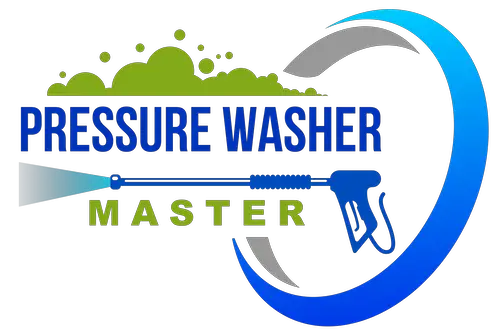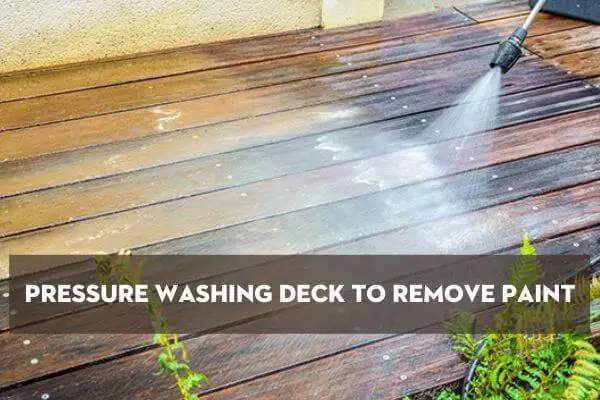If you’re planning a painting project, you should know that adequate preparation is crucial for the painting process. The stability of a new layer of paint is only as good as the surface underneath it. Therefore, before applying a new coat of paint, you should remove all peeling or flaking paint.
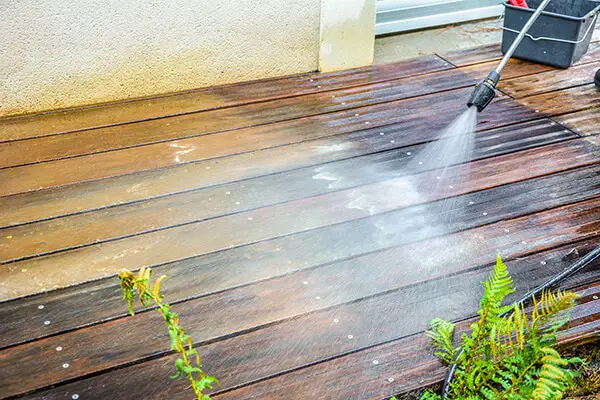
You should consider a pressure washing deck to remove paint off wood, metal, concrete, and other external surfaces because the high pressure may be highly efficient. So you can decrease the time required to accomplish this operation in half.
Scroll down to understand all the details!
How To Choose A Pressure Washer To Remove Paint From Deck
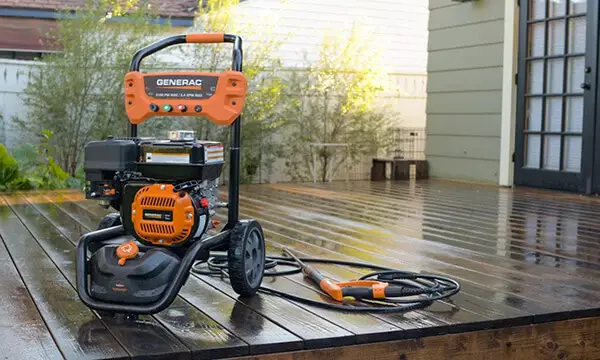
Gas or electricity
Pressure washers are generally classified as either electric or gas. However, electric pressure washers are more popular since they are more cost-effective and convenient.
An electric pressure washer is a more suitable pressure washer to remove paint. You may use it for various tasks around the house, such as cleaning fences or washing automobiles.
Nozzles
Most individuals use the yellow nozzle to remove paint. It’s referred to as a paint stripper, but it may also be used to remove stubborn stains from concrete. The spray pattern on the yellow nozzle is 15 degrees narrow. Paint chips are easily removed from surfaces when blasted with water with such a concentrated water stream. They simply drop to the ground.
PSI
Exterior paint removal needs a higher pressure stream than soft washing operations like roof cleaning. As a result, you’ll need to select a pressure washer that can do the job. A pressure washer with a PSI of 2000 or more is required to remove old paint properly. Setting the unit to 2000 will not solve the problem. For best results, use a pressure washer with a spray pressure of at least 3,000 PSI.
How To Prepare The Deck Before Pressure Washing
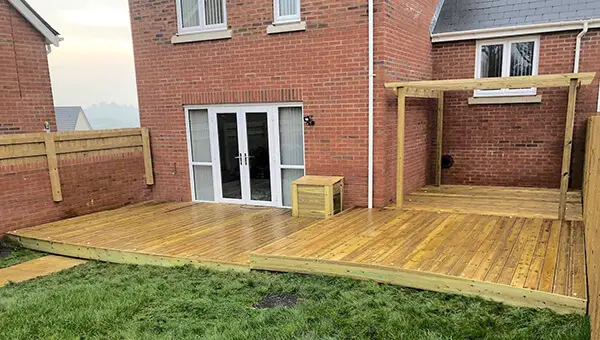
- Remove all things off the deck, including garden furniture and home goods.
- Cover the surrounding plants and flowers with a sheet before sweeping the trash and dirt off the deck. Cover enough space (approximately 10 feet) surrounding the deck to protect the plants from the pressure washer’s blast as well as paint and debris.
- Sweep the deck to get rid of any dirt or plant stuff that has accumulated on top. Then, if you have the time, clean the deck with soap and water. After that, let enough time for the wood to cure before continuing.
- With an iron-bristle brush or scraper, remove the peeling paint off the deck. If necessary, you may do this after you’ve used the pressure washer, but pre-brushing will reduce the amount of water pressure needed on the deck.
- Examine your deck for any locations where the wood may be decaying or damaged. Consider exercising additional caution with the washer in these places; decaying wood may be destroyed rapidly with just a little pressure.
On the plus side, when repainting or staining, you should repair any damaged wood. But, again, it’s preferable to deal with the situation immediately than wait until it becomes a bigger problem.
How To Remove Paint From Deck With Pressure Washer
Scrub Or Scrape The Area
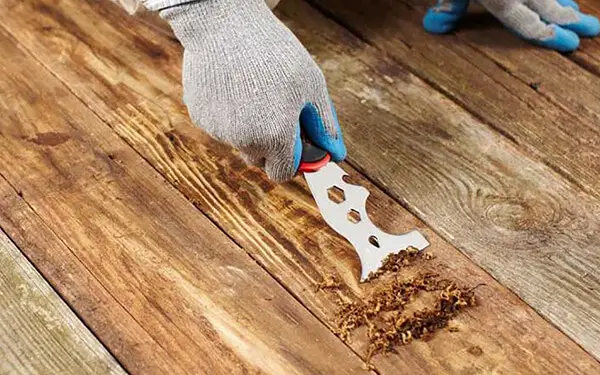
If you’re ready to wash the area, this may seem like an unnecessary step. However, it is beneficial because it will remove any loose paint like dirt and debris. You’re likely removing the paint because it’s old or flaking.
As a result, if you don’t remove any bits that have already started to flake, they may become trapped or fly throughout the garden. They might also become caught between the planks of wood.
Inspect The Area
Make a list of all the areas which are damaged after you can see them. For example, these areas might be decaying or chipped wood.
You’ll have to be extra cautious in these places, as the pressure washer may end up causing more harm. This is especially true in regions that are decaying. Pressure washing won’t help decay wood because you’ll be shooting water at it.
Use The Paint Stripper
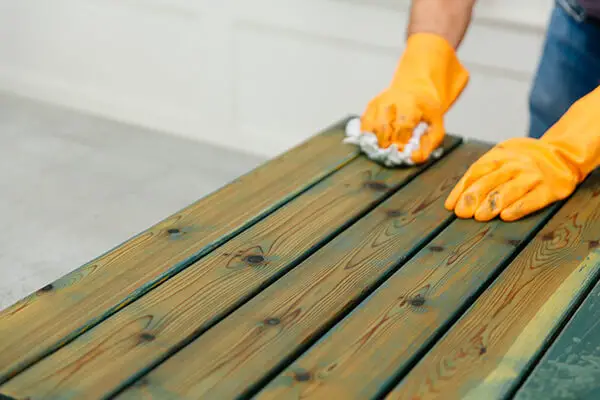
This is a critical step. The paint stripper is what will get the paint to start peeling away from the wood correctly.
Make careful to work systematically and use the paint remover to cover all painted surfaces. The best way is to start at one corner and work horizontally along, moving up and then along again.
After you’ve applied the paint remover, you’ll need to wait for it to do its job. This process should take around 30 minutes, but double-check the container’s directions just in case.
Pressure Wash
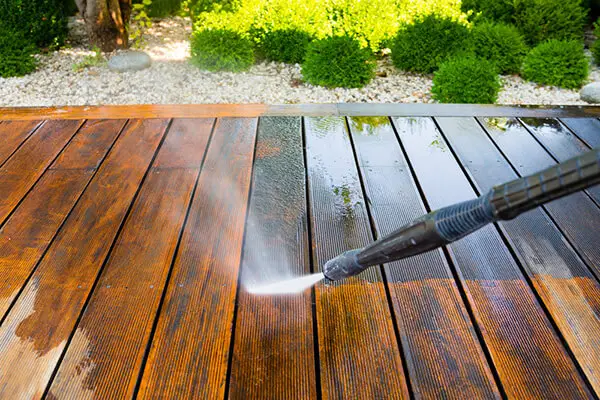
It’s finally time to wash now that you’ve gone through all of these steps. But, first, install the pressure washer according to the manufacturer’s instructions.
Maintain a distance of roughly 20 inches between the nozzle and the wood. Then you’re free to go! As you did with the paint remover, try to proceed methodically. It’s a good idea to stick on the same path. This will increase the likelihood of you covering all bases.
Spraying along the grain of the wood is also a good idea. This tip will assist in keeping the timber from being damaged.
Sanding (Optional)
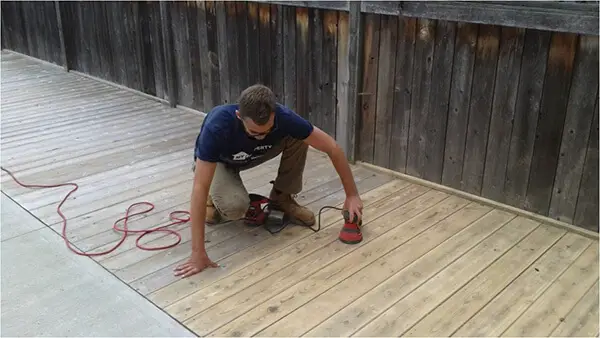
It’s a good idea to prepare the wood now if you intend to repaint it. You’ll have to wait until the wood is dry before proceeding. However, this will save you some time in the future. (However, if you’re exhausted from using the pressure washer, you can skip this step.)
Sand the wood once it has dried. If the wood has started to decay, you’ll need to either cure it or replace it entirely. If everything looks OK, sand it down. Then wipe away the wood dust with a microfiber towel.
Check out this video for the whole process of pressure washing deck to remove paint:
Conclusion
Pressure washing deck to remove paint is a complex process, even when pressure washers can complete the task fast and efficiently. You have to be patient because it takes time for chemical strippers to work. However, it’s also satisfying and proud when you finish with a clean deck!
Related Post
